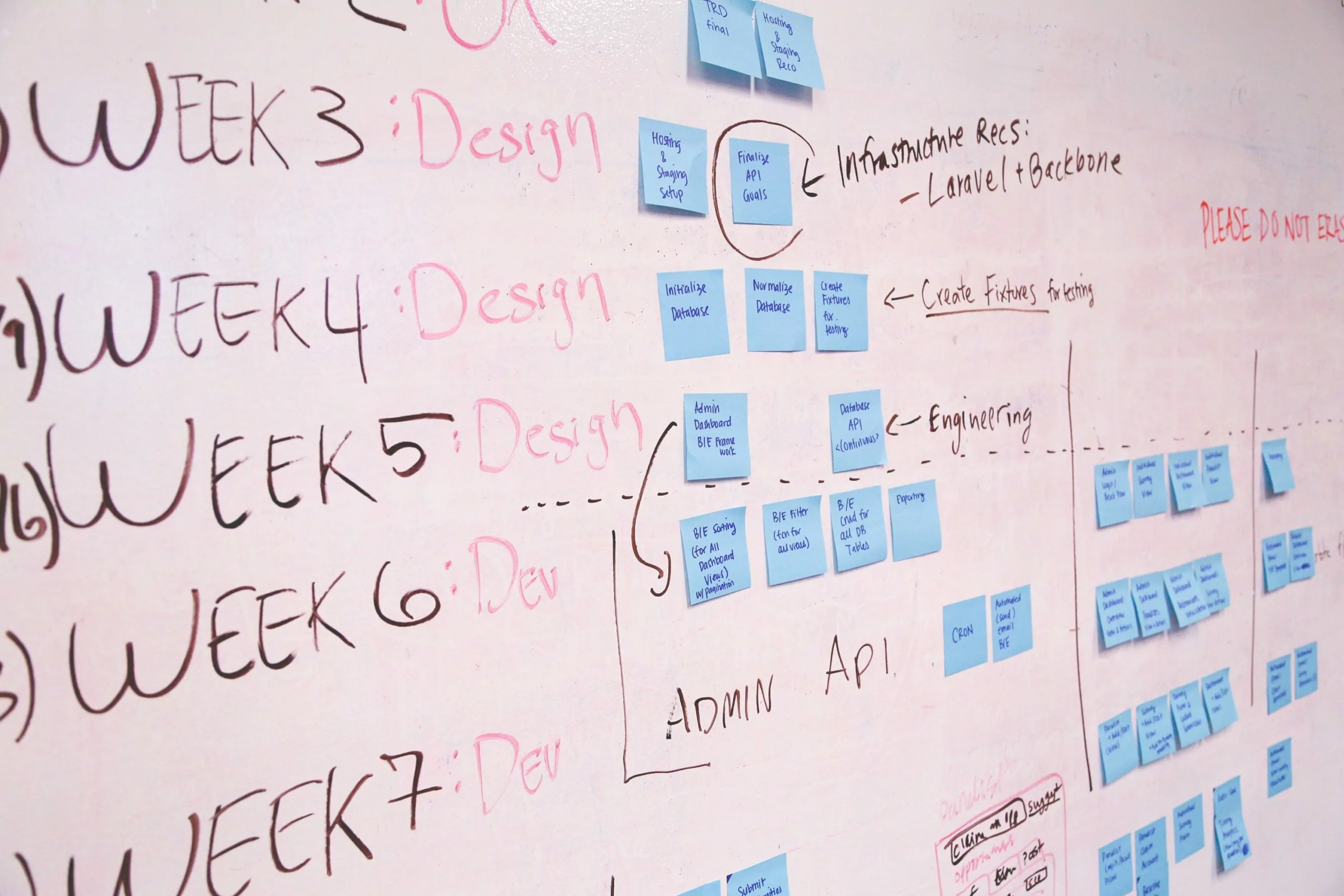Mastering Product Management: Definition, Strategy, and Steps
Includes FREE Templates and Examples – 2023
Updated by Xtensio
Table of Contents
What to expect?
Whether you are an aspiring product manager or simply want to better understand the world of product management, this comprehensive guide will provide you with a solid foundation. We will dive into the definition, strategy, and steps involved in product management, as well as discuss the different roles, responsibilities, and skills required to excel in this field. So let’s begin our journey into the fascinating world of product management.
Short Summary
Product Management is a complex role involving strategy, research, customer feedback & leadership.
Key functions include market research, formulating strategy, and executing/testing products to meet customer needs.
Product Managers must possess analytical & technical skills as well as engage with customers for successful product outcomes.
Understanding Product Management
Product management is a multifaceted discipline that encompasses a broad range of responsibilities to ensure the successful delivery of products and services. At its core, the role of a product manager involves developing the strategy, roadmap, and feature definition for a product or product line. Product marketing, forecasting, and profit and loss responsibilities are all part of this role. It’s an important position that requires a lot of responsibility and skill. In essence, product management is the bridge between customer needs, business goals, and the product development process.

The product management process requires a diverse set of skills, including analytical thinking, communication, empathy, financial acumen, leadership ability, presentation prowess, project management, research, strategic thinking, and technical expertise. With such a wide range of skills and responsibilities, it’s no wonder that product managers are often referred to as the “mini-CEOs” of their products.
The Role of Product Management
The primary responsibilities of product management encompass a wide array of tasks throughout the product lifecycle, such as strategy, roadmap, feature definition, leadership, and analysis. Product managers are accountable for establishing a product strategy, cooperating with product marketing managers on market research, monitoring current industry trends, gathering and evaluating customer feedback, determining pricing, and forming a marketing strategy. They also collaborate closely with other departments such as marketing and sales, while project managers primarily concentrate on working with the development team.
Product managers require an arsenal of skills to be successful in their roles. Problem-solving, decision-making, communication, and leadership skills are essential for navigating the complex world of product management and ensuring the success of their products.
Key Functions of Product Management
The primary duties of product management involve conducting market research, gaining customer insights, formulating strategy, executing and testing, promoting and selling, and monitoring product metrics. Market research, in particular, plays a pivotal role in product management, as it enables product managers to evaluate customer needs and product-market fit, and advocate for incorporating these data points into the company’s prioritization discussions.
During the execution stage, product managers focus on product development, internal and external testing, and the incorporation of feedback results. Gathering customer feedback is essential for the success of a new product as it allows product managers to gain insight into the needs and preferences of their target market, thereby enabling them to make informed decisions regarding product development.
Product Management Process
There is no one-size-fits-all approach to product management, as processes may vary depending on the organization, product lifecycle stage, and preferences of product team members and executives. However, the discipline has established some consensus regarding best practices that can be adapted to suit the unique needs of each organization.

The inbound activities in product management concentrate on product development, while the outbound activities are focused on the marketing and sale of a product. Defining vision and strategy, product development, testing, and launch are all inbound activities related to product management. These activities ensure that the product is launched as expected.
Outbound activities, on the other hand, are focused on the marketing and sales of a product, encompassing branding, sales, and analysis of customer feedback.
Identifying Customer Needs
Recognizing customer needs is essential for product managers, as it assists in developing products that fulfill the needs of customers, enhancing customer satisfaction and loyalty, and outdoing competitors. The initial step in product management is identifying a significant customer pain point, which is then formulated into a problem statement to create a clearly defined objective that addresses the source of dissatisfaction and encourages the subsequent steps.
Evaluating Opportunities
Assessing opportunities is essential for product managers to prioritize feature development, avert expending resources on inadequate opportunities, and concentrate on fulfilling clearly defined needs. To justify investment in constructing a new product or solution, product managers must first calculate the potential by assessing the competitive landscape and taking into account customer needs such as features that customers deem important but underdeveloped or otherwise unsatisfactory.
Product managers must also consider the cost of development, the potential return on investment, and the timeline for completion. They must also consider the potential risks associated with the project, such as the potential for customer dissatisfaction or the possibility of the project.
Building and Testing MVPs
Constructing and testing Minimum Viable Products (MVPs) is of great significance as it assists in verifying assumptions, decreases the risk of investing resources into a product that may not be successful, and provides the opportunity for early user feedback to guide future development.
In product management, potential solutions are examined and validated with the target market before engaging the product development team to ensure product-market fit.
Product Management Roles and Responsibilities
Different levels of product management jobs exist, including associate, junior, senior, and technical product managers. Technical product managers, for example, typically transition from a role in the engineering or IT teams and are responsible for managing various aspects of one or more products that require a comprehensive comprehension of technical issues, such as infrastructure and APIs. The primary focus of a technical product manager is on the internal functioning of a product, rather than its outward appearance.

Product owners are often considered part of product management in Agile organizations, but they are distinct from product managers, with a more tactical focus. In the following sections, we will delve deeper into these roles and responsibilities, as well as discuss the agile approach to product management.
Different Levels of Product Managers
Product owners are primarily internal-facing, highly involved in the technical process, and collaborate intently with tech teams. They identify iterations, develop acceptance criteria, guide backlog grooming, approve stories, and ensure they are “ready.” They work closely with the product manager. This includes release planning, feature definition and defect management. The product owner’s role is more tactical in nature, compared to that of the product manager. It focuses on short-term tasks.
A product line manager, on the other hand, is responsible for managing multiple products which are generally related to one another. This role may also include overseeing individual contributor product managers who manage a single product or sub-component. Understanding these different levels of product managers will help you better navigate the world of product management and identify the role that best suits your skillset and career goals.
Agile Product Management
Agile Product Management is an adaptive approach to product strategy planning and implementation, wherein teams collaborate to achieve product goals through iterative cycles of discovery and delivery. This approach involves a continual adaptation of the product roadmap based on feedback and insights, working in short sprints, and focusing on incremental improvement rather than adhering to a rigid plan.
The advantages of employing Agile Product Management include the ability to quickly respond to customer feedback and market fluctuations, expedited product delivery, and the facilitation of collaboration between teams.
Essential Skills for Product Managers
A successful product manager must possess a diverse set of skills that allow them to navigate the complex world of product management and excel in their role. Some of the essential skills required for a successful product manager include analytical skills, communication, empathy, financial skills, leadership, presentation skills, project management, research, strategic thinking, and technical skills. These skills are critical for effective collaboration with various teams, making informed decisions, and ensuring the success of the product.

As the product management landscape continues to evolve, product managers must also be adaptable and open to learning new skills and methodologies, such as Agile Product Management. This adaptability and continuous learning mindset will enable product managers to stay ahead of industry trends and deliver innovative products that meet customer needs and drive business growth.
Developing a Product Roadmap
A product roadmap is a vital tool for product managers, as it assists in planning, communicating, and executing their product vision. It provides a broad overview of the product’s course and facilitates the alignment of stakeholders around a shared objective. Additionally, a product roadmap supports the prioritization of features, the allocation of resources, and the monitoring of progress.

Developing a product roadmap involves understanding customer requirements, assessing opportunities, constructing and assessing MVPs, establishing objectives, specifying milestones, and forming a timeline. There are various types of product roadmaps available, including feature roadmaps, timeline roadmaps, and release roadmaps, which can be tailored to the specific needs of the product and the organization.
B2B vs. B2C Product Management
Product management in Business-to-Business (B2B) and Business-to-Consumer (B2C) environments may have some differences, but they share common aspects that make the role of a product manager valuable in both settings. For instance, B2B product management centers on workflows and optimizing the purchasing process to be scalable, while B2C product management centers on the end-user and streamlining the purchasing process.

Despite these differences, both B2B and B2C product management requires product managers to understand and address multiple value propositions and tailor the product and pitch for each persona. This adaptability and ability to cater to different markets showcases the versatility of product managers and the critical role they play in driving product-led growth across various industries.
Optimizing Product Management Operations
Product managers have a multitude of obligations and must be organized and efficient to manage conversations and meetings while completing work. Optimizing product management operations is essential to ensure that product managers can effectively carry out their responsibilities and maintain a balance between strategic planning and day-to-day tasks.
To optimize product management operations, product managers should focus on improving their decision-making processes and streamlining their meetings, which we will discuss in more detail in the following sections.
Decision-Making Processes
Decision-making processes are essential in business and management, as they enable individuals to make informed decisions that can result in success and facilitate the identification of problems and solutions. Product managers need to find scalable ways to make decisions, delegate tasks, define scopes, and manage their time for optimal productivity.
Rational decision-making, intuitive decision-making, and collaborative decision-making are the available decision-making processes, each with its own set of advantages and disadvantages. Implementing the appropriate decision-making process for a given situation can lead to enhanced efficiency, improved problem-solving capabilities, and increased accountability within the product management team.
By refining their decision-making processes, product managers can better navigate the complex world of product management and drive product success.
Managing Meetings
Product managers often find themselves at the helm of numerous meetings, making it crucial for them to manage these gatherings effectively to ensure productive outcomes. Some tips for managing meetings include focusing on efficiency, limiting attendance to necessary participants, defining a narrow scope, taking notes for future reference, clarifying action items, and considering skipping meetings that are deemed unproductive.

By optimizing their meeting management, product managers can foster improved collaboration with relevant teams, make better use of their time, and ultimately drive product success.
Engaging with Customers
Engaging with customers offers product managers the chance to obtain direct feedback, ideas, and inspiration that can be used to improve the product experience. By meeting with customers directly, product managers can gain valuable insights into their needs and preferences, which can then be incorporated into the product development process to ensure a better fit with customer expectations.

Conversations between product managers and customers can also serve as a platform for gathering churn feedback through exit interviews. This feedback can help identify critical product issues or deficiencies that could lead other users to discontinue using the product.
Following up after gathering customer feedback is also important, as it encourages further feedback and demonstrates to customers that their input is valued.
Launching and Evolving Products
Product managers play a critical role not only in the development and launch of a product, but also in its evolution throughout its lifecycle. As a product progresses through its various stages, the role of product management evolves to address the changing needs of the product and its users. From subject matter expertise and MVP prioritization before launch to growth, retention, and repurposing efforts after gaining users, product managers must adapt their strategies and tactics to keep their products relevant and successful in the market.

One of the key responsibilities of product managers following a product launch is monitoring the performance of the product and utilizing analytics tools and reports to inform business leadership. Product managers should also conduct product retrospective sessions to capture learnings, recognize successful efforts, and enhance the next release. By analyzing product metrics and adjusting their strategies accordingly, product managers can ensure the continued success and growth of their products.
Building a Career in Product Management

Product management is a versatile career option that doesn’t require a linear path and fits many backgrounds and skills. It is a lucrative and gratifying professional choice, with a considerable rate of job growth. Aspiring product managers should focus on developing the essential skills required for the role, such as analytical thinking, communication, empathy, financial acumen, leadership ability, presentation prowess, project management, research, strategic thinking, and technical expertise.
To demonstrate your interest in product management and build a strong foundation, consider subscribing to relevant newsletters, reading material, and taking courses to improve your skills. By doing so, you’ll be better equipped to embark on a successful product management career and make a meaningful impact on the products and businesses you work with.
Summary
In conclusion, mastering product management is a journey that requires a solid understanding of the various aspects of the discipline, from the roles and responsibilities of product managers to the processes, tools, and skills needed for success. By familiarizing yourself with the fundamentals of product management, you’ll be better equipped to navigate the complex world of product development, marketing, and growth.
Whether you’re an aspiring product manager or simply interested in learning more about the field, we hope this guide has provided you with valuable insights and a strong foundation to build upon. Remember, the world of product management is constantly evolving, and staying adaptable, curious, and committed to continuous learning is key to success. So embrace the challenge and embark on your journey to becoming a master of product management.
Frequently Asked Questions
What is the role of product management?
Product Management is the crucial bridge between customer needs and market success. It encompasses identifying product strategies, optimizing features, and managing releases throughout the product life cycle to ensure maximum value for customers and increased profitability for businesses.
By understanding customer needs and market trends, product managers can develop strategies to create products that meet customer demands and maximize business success. They must also ensure that the country is a safe zone.
What are the 7 stages of product management?
The 7 stages of product management are ideation, research and analytics, planning, prototyping, validation, delivery, and launch.
Following each step in the product development lifecycle helps ensure that your business meets its objectives and achieves success.
What should I do to become a product manager?
To become a product manager, I should pursue a degree in engineering or computer science, obtain an MBA and gain relevant certification.
Furthermore, networking and developing meaningful connections with organizations that offer product management jobs would be extremely beneficial for my career.
What are the 5 Ps of product management?
The 5Ps of product management include planning, process, people, possessions, and profits. This approach takes into account all the aspects necessary for successful product development and delivery, from planning to execution to measuring results.
By leveraging all five, we can leverage all five. Effectively, product managers can guide products to success in an ever-evolving marketplace.
How do you define product management?
Product management is a process of managing the life cycle of a product from development, marketing, and sales, all the way to service and support. Product managers are responsible for ensuring that the product meets customer needs and works within the parameters of the company’s business goals.
Product management is the intersection of business, technology, and design. It is a practice of developing products that target customer needs while generating business value through revenue growth and market success. Product managers combine their knowledge in these areas to make decisions regarding what products should be created and how they should be brought to market.








